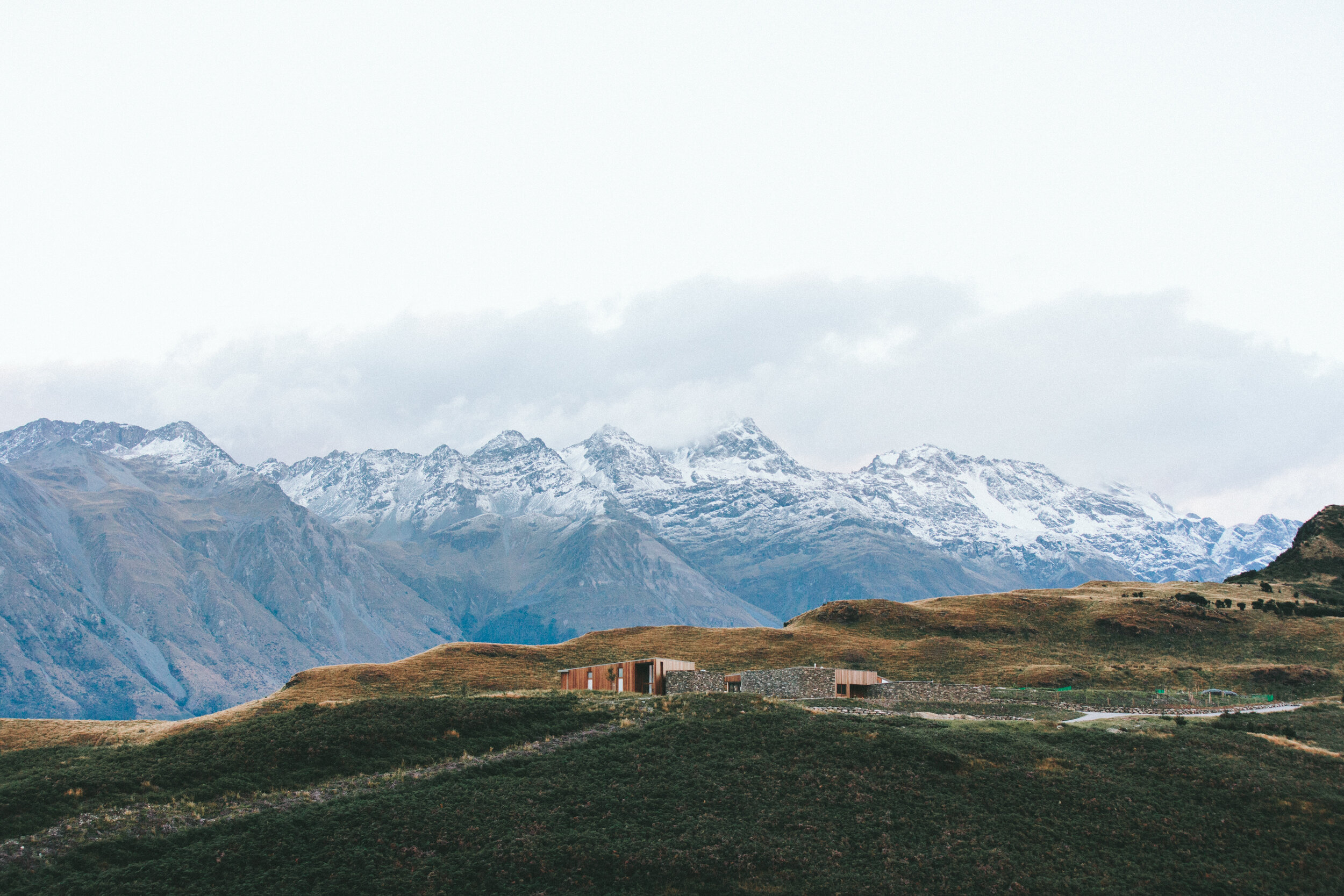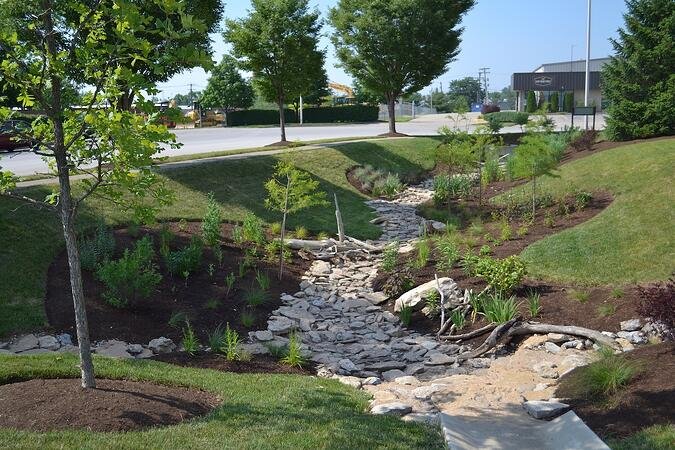
Low Impact Development & Green Infrastructure
Low Impact Development (LID) is an approach to land development (or re-development) that works with or mimics nature to manage stormwater as close to its source as possible. LID employs principles such as preserving and recreating natural landscape features, minimizing imperviousness to create functional and appealing site drainage, and treating stormwater as a resource rather than a waste product.
There are many practices that have been used to adhere to these principles such as bioretention facilities, rain gardens, vegetated rooftops, rain barrels, and permeable pavements. By implementing LID principles and practices, water can be managed in a way that reduces the impact of built areas and promotes the natural movement of water within an ecosystem or watershed. Applied on a broad scale, LID can maintain or restore a watershed's hydrologic and ecological functions. LID has been characterized as a sustainable stormwater practice by the Water Environment Research Foundation and others. (US EPA)
Green infrastructure (GI) is an approach that communities can choose to maintain healthy waters, provide multiple environmental benefits and support sustainable communities. GI is a relatively new and flexible term, and it has been used differently in different contexts. The US Environmental Protection Agency uses the term "green infrastructure" to generally refer to systems and practices that use or mimic natural processes to infiltrate, evapotranspirate (the return of water to the atmosphere either through evaporation or by plants), or reuse stormwater or runoff on the site where it is generated. GI can be used on a wide range of landscape scales in place of, or in addition to, more traditional stormwater control elements to support the principles of Low Impact Development (LID).
Thanks to our non-point source grant funding, provided by Arkansas Natural Resources Commission, and matching funds provided by our partners and sponsors, we are working to implement green infrastructure along the Razorback Regional Greenway and provide LID education through implementation at our Watershed Learning Center.
Find a location near you to see first-hand how these projects capture rain, filter and clean pollutants and provide many benefits to our communities! (Green Infrastructure Map PDF)
Green Infrastructure Costs
Green infrastructure and LID are beneficial for the environment and help maintain healthy waters, but installation and maintenance costs can be a concern for interested landowners. Site specific factors such as space limitations, existing utilities, aesthetic requirements, or slope and soil conditions often influence costs, and choosing the best practice for your location will help keep installation and maintenance within budget. Additionally, integrating green infrastructure with ongoing or planned projects is often more cost effective than retrofitting individual sites.
Per square foot, vegetated green infrastructure practices such as bioretention areas or rain gardens can be more expensive to install and maintain than other stormwater practices. However, when the costs are analyzed per unit of impervious surface being treated these practices become more cost-effective than other technologies. Other green infrastructure benefits that should be considered include flood mitigation, habitat creation, pollutant reduction, and potential reductions in heating and cooling costs.




